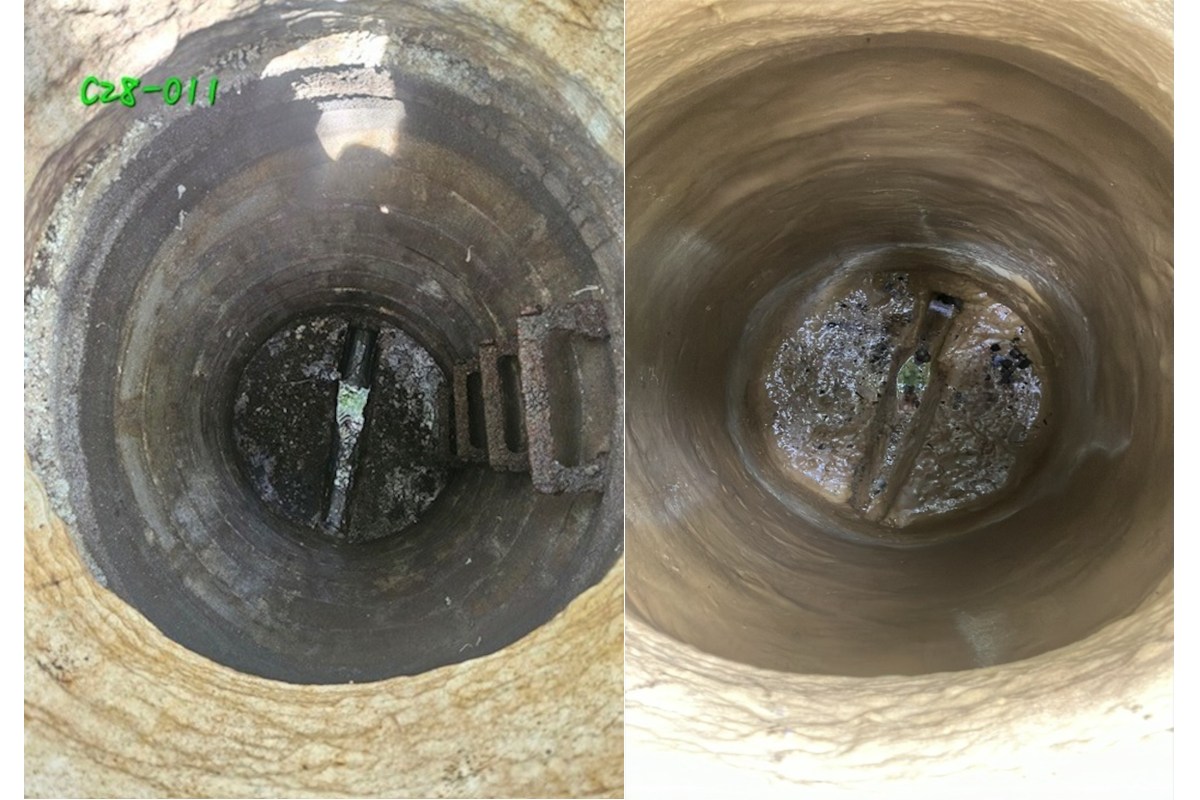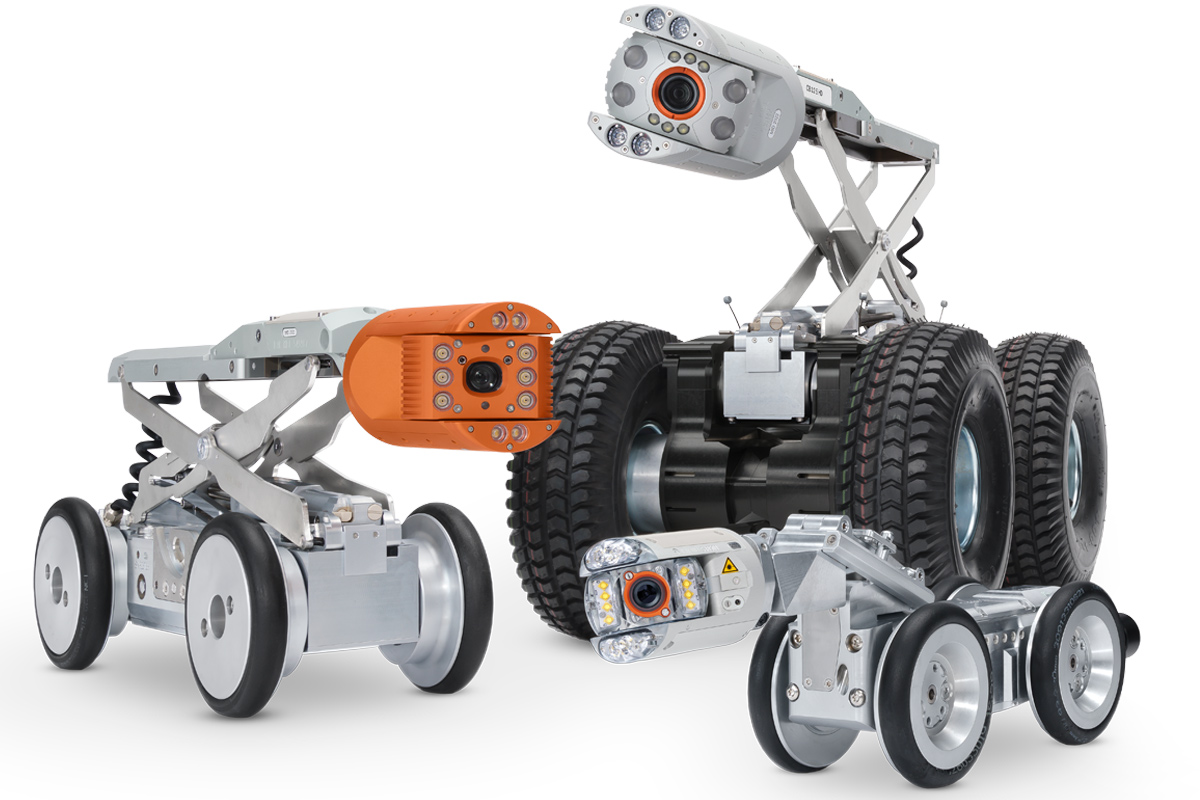Technological Advancements Help Lateral Cutters Keep Pace with Evolving Rehab Processes
 In today’s sewer rehabilitation industry, the term “lateral cutter” describes a sophisticated multi-function robot used in a variety of rehabilitation processes. However, the original lateral cutters were constrained strictly to the lateral reinstatement, a post-lining process whereby a service connection that has been sealed closed by the liner is reopened by cutting away the obstructing portion of the liner.
In today’s sewer rehabilitation industry, the term “lateral cutter” describes a sophisticated multi-function robot used in a variety of rehabilitation processes. However, the original lateral cutters were constrained strictly to the lateral reinstatement, a post-lining process whereby a service connection that has been sealed closed by the liner is reopened by cutting away the obstructing portion of the liner.
Since then, these original cutters debuted in the market, advancements in robotic technology have allowed them to evolve to where they now perform any array of ancillary functions like grinding away protruding taps, smoothing offsets and joints, repairing liner defects, and performing pre- and post-inspection.
The different uses and functions of these robots appeal to a diverse range of users. Mainline lining contractors primarily use the robots for lateral reinstatement. The robot is lowered into the pipe, the lateral is located, and the operator (from inside the truck) operates joystick controls to cut an opening at the connection. The dexterity required is much like playing a video game. Certain cutters may allow the mainline contractor to perform necessary preparation work prior to lining, as well.
Industrial and commercial plumbers use more compact robots to perform the small diameter work typically found in residential and industrial projects. This involves connection reinstatement and any prep work in pipe diameters down to 2 in. This work is typically sensitive to time demands, so productivity of the equipment is critical.
Lateral connection rehab contractors (both CIPP and resin injection) use robotic cutters to clean up the lateral-to-main connection prior to rehabilitation. Some robots can even be used to install cured-in-place (CIP) top hats and similar products.
Meeting the Demand
As rehabilitation techniques have advanced, cutters have evolved to meet the growing demands placed on contractors. Originally, skid-mounted cutters were simply pulled in by a winch in conjunction with a CCTV camera. Such cutters are still in use today, and typically feature a simple, durable design with an articulating head and air motor. But with efficiency and productivity growing more critical, self-propelled units emerged on the market. As is common in the rehab industry, the technology originated in Europe and migrated to the United States. With self-propulsion, a cutter can be lowered into the manhole and driven up the pipe to the lateral within a matter of minutes. These self-propelled units typically have integral cameras, eliminating the need for a separate CCTV crawler.
“In today’s competitive pipeline rehabilitation market, a reliable self-propelled cutting robot is a must,” says SAK Construction general superintendent Jason Laney. “A single robot that can pre-televise a line, cut a protruding tap, reinstate the lateral connections after lining, and then post-televise — particularly in sizes ranging from eight to 24 in. — is key to being efficient and productive in the rehabilitation business.”
As performance demands on the cutters grew further, manufacturers started experimenting with different power sources (air, electric, hydraulic, water). Likewise, a wider array of cutting tools were employed. In addition to the router-style bits originally used to cut liner, large ball- and cone-shaped bits emerged offering better shaping capability when cutting openings. Likewise, new diamond carbide bits proved more durable against the stronger fiberglass liners that were gaining in popularity.
Today, there are also small-diameter specialized cutters that have no wheels and are pushed into a line much like a push camera. Once in place, they use an articulating cutting head to position the cutting bit. Such units typically have inflating bladders or remotely actuated bracing arms to stabilize the robot during cutting. These cutters can operate in vertical pipe applications, in which certain robots have the ability to crawl forward/backward in the pipe using a system of air bladders. “In this industry, it’s not one-size-fits-all when it comes to cutters,” explains Environmental Pipe Cleaning owner Dave Hawes. “Many have their specific applications, and most of it is dependent on how the plumbing is setup.”
 Latest Cutter Advancement
Latest Cutter Advancement
With increasing performance demands and technological sophistication, the latest area of advancement for cutting robots is in remote control and real-time monitoring. CAN-Bus, a message-based digital control architecture, allows microcontrollers to communicate with devices for automation and information sharing. With the ability to read real-time position on all cutting axes; monitor system pressure, temperature, humidity, and inclination; and have multiple cameras for viewing, remote operation has come to feel very up close and personal. “Information is powerful; it represent productivity and profitability,” says Pipeline Renewal Technologies business manager Pete Kurz. “Using new technology to save and recall lateral position, automate subroutines, and monitor cutter status during operation helps ensures that productivity and profitability.”
When choosing a robotic cutter, efficiency and durability are critical. For example, a typical residential pipe section will may contain as many as six lateral connections. In a competitive market, a contractor can’t afford to spend more than 15 minutes to open and finish a lateral connection. If the robot is not designed for that level of output, persistent breakdowns will erode profit and derail production schedules. It is important that a contractor test drive a robotic cutter before purchase to make sure that the equipment fits his particular application.
Within a relatively short period of time, lateral cutters have evolved from simple machines that perform a single function to sophisticated robots that perform a host of tasks with high productivity. As the demands of the rehabilitation industry continue to evolve, robot manufacturers will continue to push the bounds of what’s possible.
Sean Lemcke is cutter product manager at Pipeline Renewal Technologies.





Comments are closed here.